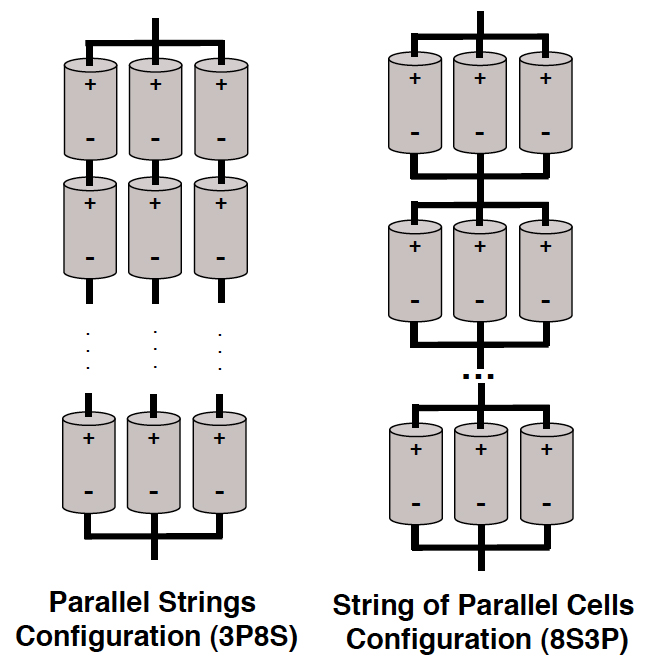To help develop more effective battery management systems for plug-in hybrid vehicles, an Ohio State University researcher programmed a supercomputer to simulate the characteristics and behavior of individual lithium-ion batteries as they are arranged in an automotive battery pack.
Benjamin “BJ” Yurkovich, a graduate research fellow at the Center for Automotive Research (CAR) at The Ohio State University, recently collaborated with the Ohio Supercomputer Center (OSC) to better understand the characteristics and behavior of large battery packs.
A vehicle’s battery management system (BMS) monitors and protects the battery pack, prolongs its life and keeps it ready to deliver full power when called upon. The BMS equalizes the voltage drawn from each of the cells and interfaces with other on-board systems, such as engine management, climate control, communications and safety.
The power needs for extended all-electric operation of plug-in hybrid electric vehicles (PHEVs) require much more on-board energy than typically provided by the nickel-metal-hydride batteries found in standard gasoline-electric hybrids. According to experts, PHEVs will be commercially viable and mass-produced once engineers refine the lithium-ion battery and management systems needed to support the range and power demanded by consumers.
The current engineering solution is to link several parallel strings of lithium-ion battery cells within a battery module and to link several modules into larger battery packs. However, until now, these configurations had not been empirically tested to determine how the state-of-charge (SoC) deviation – and therefore battery life – is affected by changing temperature and energy load on individual cells.
Yurkovich first identified the model parameters of individual battery cells from various makers by using a 72-node cluster computer that he had helped construct at CAR.
“Each cell in a battery pack is unique,” said Yurkovich, who earned a bachelor’s degree in computer science last year and will add a master’s degree in mechanical engineering from OSU this summer. “They vary in manufacturing variability, cell history and existing conditions, such as temperature, current and state-of-charge. These factors must be considered by a battery management system to achieve optimum voltage equalization.”
Yurkovich turned to The MathWorks’ numeric computation and visualization software, known as MATLAB. He devised a battery model based on the experimental battery cell data and simulation algorithms to analyze voltage, current and SoC deviation of parallel strings of batteries.
With assistance through OSC’s Remote MATLAB Services (RMS), Yurkovich transitioned his MATLAB scripts to run on 200 nodes of OSC’s IBM Cluster 1350 supercomputer. Nicknamed the Glenn Cluster, OSC’s flagship system features 9,500 cores, 24 terabytes of memory and a peak computational capability of 75 teraflops – which translates to 75 trillion calculations per second.
“The simulations considered two different battery pack configurations, profiles for both hybrid and plug-in hybrid vehicles, three different temperatures, two different variations of internal resistance and capacity, three different states-of-charge and three different variations for the standard deviation,” Yurkovich explained. “Each simulation contained 10,000 parameter-varied individual pack Monte Carlo calculations.”
In less than eight hours, the Glenn Cluster computed more than a million successful individual iterations of Yurkovich’s model. He estimated that it would have taken a year and a half to run his algorithms on his desktop computer and more than a week to run them on the much smaller CAR cluster computer.
“BJ was one of the Center’s first RMS users and gave the staff valuable feedback on the user interface,” said David Hudak, Ph.D., director of HPC Engineering at OSC. “RMS allowed him to validate his MATLAB scripts locally and then execute production runs on the Glenn Cluster without leaving his desktop computer’s MATLAB workspace. In addition, we found that some of his processing was really I/O intensive and benefited greatly from our parallel file system.”
With the knowledge gleaned from his simulations, Yurkovich was able to use metrics he defined to analyze the SoC deviation, voltage and amperage of individual cells to provide a foundation for the design of more intelligent battery management system design in PHEV battery packs. Down the road, he intends to develop a methodology to model and simulate heat generated by various battery pack configurations.
Yurkovich also serves as the chief technology officer of Juice Technologies, a leading provider of Plug Smart products and technologies that enable the intelligent charging of batteries and PHEVs, as well as products to optimize home and business energy use. In addition to battery technology and battery management systems, he specializes in applied software, embedded systems and data acquisition, along with engineering specific end-user application development.
The Ohio Supercomputer Center is a catalytic partner of Ohio universities and industries that provides a reliable high performance computing infrastructure for a diverse statewide/regional community. Funded by the Ohio Board of Regents, OSC promotes and stimulates computational research and education in order to act as a key enabler for the state's aspirations in advanced technology, information systems, and advanced industries. For additional information, visit http://www.osc.edu

